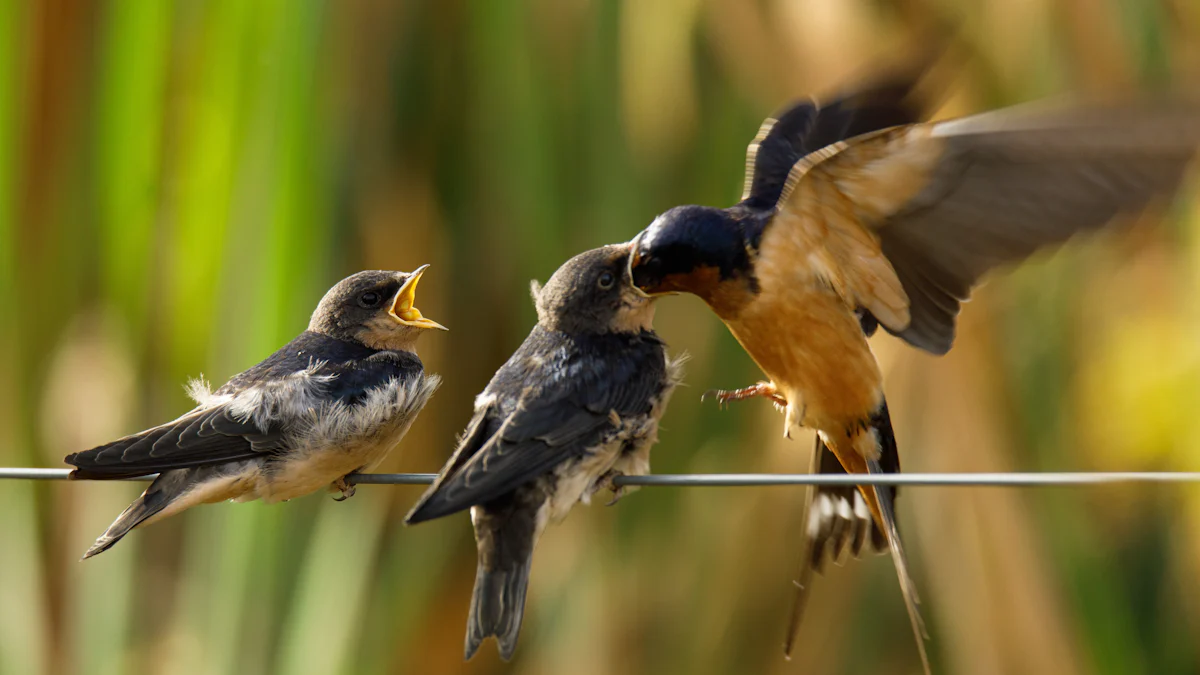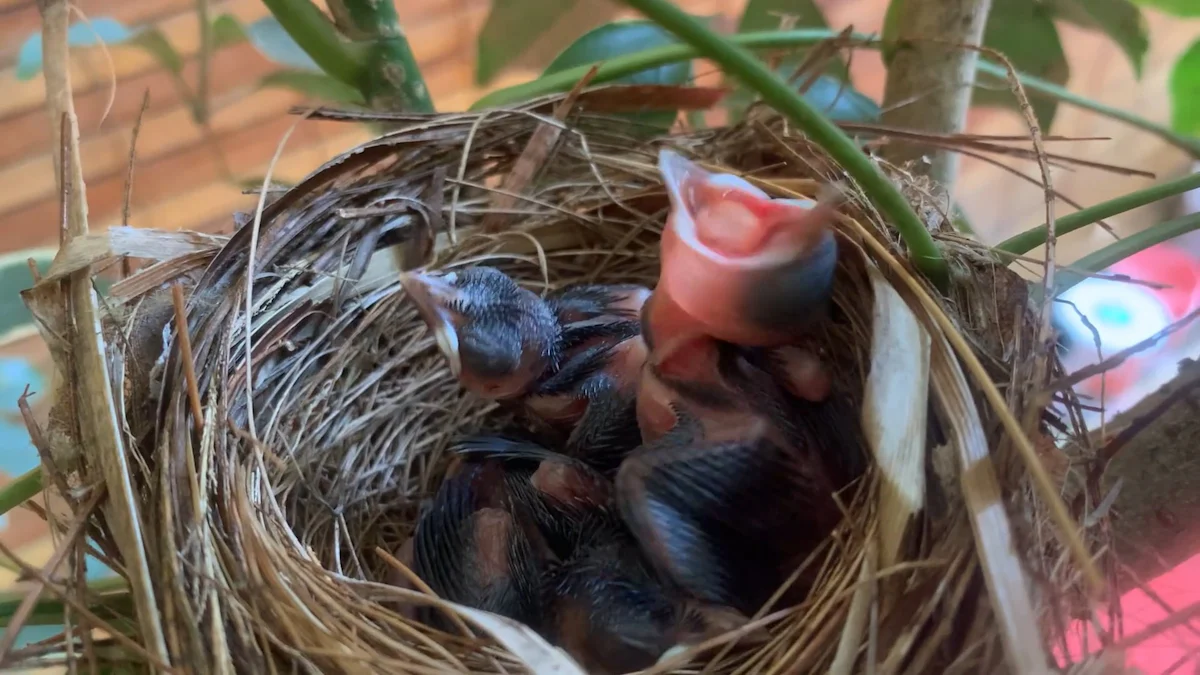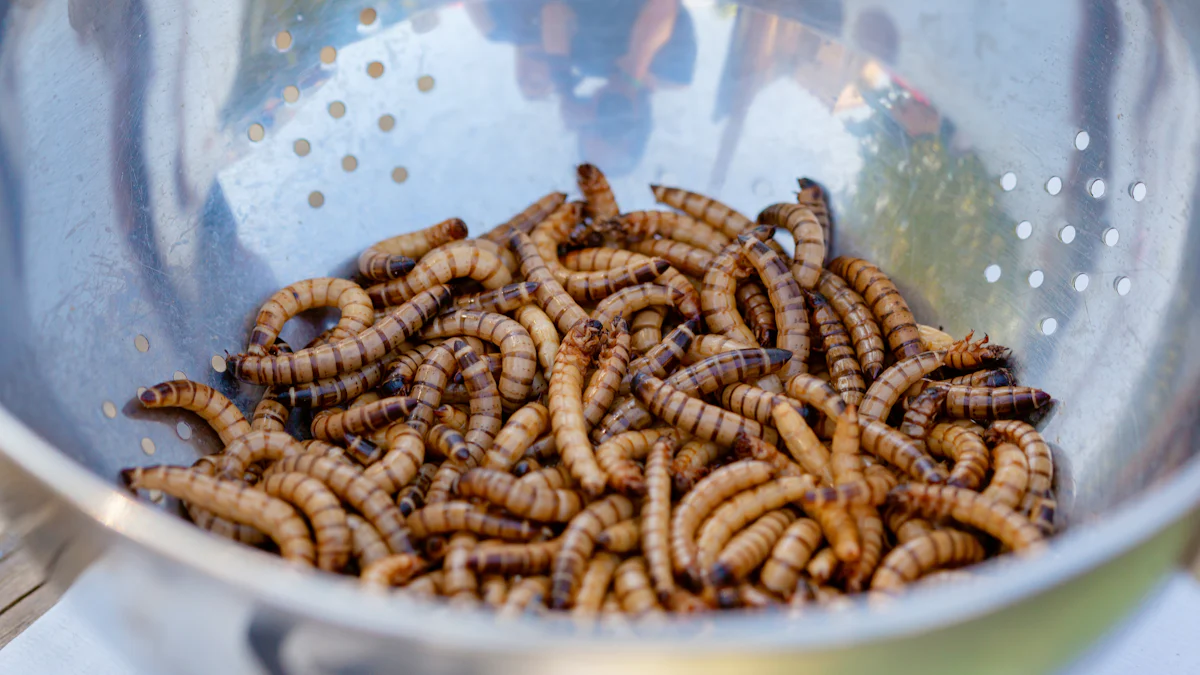
Mealworms play a crucial role in the diet of nestlings. These tiny creatures offer a powerhouse of nutrition, packed with high protein and essential nutrients that support healthy growth and development. When you feed nestlings mealworms, you provide them with the energy they need to thrive. However, it’s vital to practice safe feeding methods to ensure the well-being of young birds. You might wonder how to effectively feed these mealworms to nestlings. By understanding the right techniques, you can make a significant difference in their survival and growth.
Key Takeaways
- Mealworms are a nutritious food source for nestlings, providing essential protein and nutrients that support their growth and development.
- Choose between live and dried mealworms based on your needs; live mealworms encourage natural foraging, while dried mealworms are easier to store and handle.
- Proper storage is crucial: keep live mealworms in a refrigerator and dried mealworms in an airtight container in a cool, dry place to maintain freshness.
- Use safe feeding practices, such as hand-feeding with tweezers or using specialized feeders, to ensure hygiene and prevent contamination.
- Soak dried mealworms in water before feeding to keep nestlings hydrated, especially during warmer months.
- Encouraging natural behaviors through feeding can enhance the survival skills and social interactions of nestlings, contributing to their overall well-being.
Understanding Nestlings Mealworms
What Are Mealworms?
Mealworms are the larval stage of the darkling beetle. They have a fascinating lifecycle that begins as eggs, hatches into larvae, and eventually transforms into pupae before becoming adult beetles. You might find it interesting that mealworms are not actually worms but rather the larval form of an insect.
These little creatures pack a punch when it comes to nutrition. Mealworms are rich in protein, which is essential for the growth and development of nestlings. They also contain vital vitamins and minerals that support metabolic processes and enhance immune function. This makes them an excellent choice for feeding young birds. According to studies, the amino acid profile of mealworms closely matches the dietary needs of birds, supporting muscle development and feather growth.
Types of Mealworms
When it comes to feeding nestlings, you have two main options: live mealworms and dried mealworms. Each type has its own set of advantages and disadvantages.
Live mealworms vs. dried mealworms
Live mealworms are often more appealing to birds because they mimic the natural movement of prey. This can encourage natural foraging behaviors in nestlings. However, live mealworms require proper storage conditions to keep them healthy and active. You need to store them in a cool place, like a refrigerator, and feed them occasionally to maintain their vitality.
On the other hand, dried mealworms offer convenience. They don’t require refrigeration and have a longer shelf life. You can easily store them without worrying about spoilage. However, dried mealworms lack moisture, so it’s a good idea to soak them in water before feeding them to nestlings. This helps ensure that the young birds stay hydrated, especially during warmer months.
Pros and cons of each type for feeding nestlings
-
Live Mealworms:
- Pros: Encourage natural foraging, high moisture content.
- Cons: Require refrigeration, need regular feeding to stay alive.
-
Dried Mealworms:
- Pros: Easy to store, long shelf life.
- Cons: Lack moisture, may need soaking before feeding.
By understanding the differences between live and dried mealworms, you can make an informed decision about which type best suits your needs and the needs of the nestlings you care for.
Benefits of Feeding Mealworms to Nestlings
Nutritional Advantages
Feeding mealworms to nestlings offers significant nutritional benefits. Mealworms are packed with high protein content and essential nutrients that are vital for young birds. Protein plays a crucial role in avian diets, especially for insectivorous species. It supports muscle development and feather growth, which are essential during molting and breeding seasons. According to a study published in PLOS One, the amino acid profile of mealworm protein closely matches the dietary needs of birds like Eastern Bluebirds. This makes mealworms an excellent choice for ensuring healthy growth and development in nestlings.
Mealworms also provide a rich source of vitamins and minerals. These nutrients support metabolic processes and enhance immune function, helping nestlings build strong bodies. By incorporating mealworms into their diet, you can give young birds the energy they need to thrive and grow into healthy adults.
Behavioral Benefits
Feeding mealworms to nestlings not only supports their physical health but also encourages beneficial behaviors. When you offer live mealworms, you stimulate natural foraging behaviors in young birds. The movement of live mealworms mimics the natural prey of birds, prompting nestlings to engage in instinctive hunting actions. This practice helps them develop essential survival skills that they will use throughout their lives.
Moreover, feeding mealworms can enhance parent-bird interactions. Adult birds often feed mealworms to their young, strengthening the bond between them. This interaction is crucial for the social development of nestlings, as it teaches them how to communicate and interact with their parents. By providing mealworms, you facilitate these important behavioral interactions, contributing to the overall well-being of the nestlings.
How to Feed Mealworms to Nestlings

Feeding nestlings mealworms can be a rewarding experience. You get to see young birds grow strong and healthy. But how do you go about it? Let’s explore some effective methods and the equipment you’ll need.
Feeding Methods
Hand-feeding techniques for nestlings
Hand-feeding nestlings can be an intimate and rewarding way to ensure they get the nutrition they need. To start, gently hold the nestling in one hand. Use tweezers or your fingers to offer a mealworm. Make sure the mealworm is small enough for the nestling to swallow easily. You might need to break larger mealworms into smaller pieces. This method allows you to control the amount each bird eats, ensuring they don’t overeat.
Using feeders to provide mealworms
If you prefer a less hands-on approach, using feeders is a great option. Mealworm feeders are designed to keep mealworms contained and accessible to birds. You can place these feeders near your feeding station to attract birds. Some feeders come with features like a roof to protect mealworms from the elements and a cleanable tray for easy maintenance. You can also use trays or platforms to offer dried mealworms. Soaking dried mealworms in water before placing them in the feeder can make them more appealing and easier for birds to eat.
Equipment Needed
Types of feeders suitable for mealworms
Choosing the right feeder is crucial. Look for feeders that are durable and easy to clean. A good feeder should have a smooth, steep-sided container to prevent live mealworms from escaping. Dried mealworm feeders can be simple trays or platforms. Specialized mealworm feeders often have features like a roof and a cleanable tray, making them ideal for both live and dried mealworms.
Tools for handling and distributing mealworms
You’ll need a few tools to handle and distribute mealworms effectively. Tweezers or small tongs can help you pick up mealworms without touching them directly. This is especially useful for hand-feeding. For storing mealworms, use a plastic storage container with ventilation holes. This keeps them fresh and viable. Bedding material and moisture sources are also important for maintaining live mealworms’ health.
By using the right methods and equipment, you can ensure that feeding nestlings mealworms is both effective and enjoyable. Whether you choose to hand-feed or use feeders, providing these nutritious treats will support the healthy growth and development of young birds.
Safe Feeding Practices

When feeding nestlings mealworms, you must prioritize safe feeding practices to ensure the health and well-being of the young birds. Let’s dive into how you can store mealworms properly and maintain hygiene during feeding.
Proper Storage of Mealworms
Ideal conditions for storing live mealworms
To keep live mealworms healthy and ready for feeding, you should store them in a refrigerator. The ideal temperature range is between 45-50°F. This cool environment helps extend their lifespan by halting their metamorphosis. You can use a plastic container with ventilation holes to store them. This setup provides the necessary airflow while keeping them contained. Remember to add some bedding material like oats or bran, which serves as both a substrate and a food source for the mealworms.
Tips for storing dried mealworms to maintain freshness
Dried mealworms offer convenience, but you need to store them correctly to maintain their quality. Keep them in a cool, dry place to prevent spoilage. A pantry or cupboard away from direct sunlight works well. Make sure the container is airtight to protect them from moisture and pests. Proper storage ensures that dried mealworms remain fresh and nutritious for your nestlings.
Hygiene and Safety Tips
Ensuring cleanliness when handling mealworms
Cleanliness is crucial when handling mealworms. Always wash your hands before and after touching them. Use tools like tweezers or small tongs to pick up mealworms, minimizing direct contact. This practice helps prevent the spread of germs and keeps both you and the birds safe.
Preventing contamination and spoilage
To avoid contamination, regularly clean the feeders and storage containers. Use warm, soapy water to wash them thoroughly. Rinse well and let them dry completely before refilling with mealworms. By maintaining clean equipment, you reduce the risk of spoilage and ensure that the mealworms remain a healthy food source for nestlings.
By following these safe feeding practices, you can provide nestlings with nutritious mealworms while ensuring their safety and health. Proper storage and hygiene are key to making mealworms a beneficial part of their diet.
Feeding mealworms to nestlings offers numerous benefits, from providing essential nutrients to encouraging natural behaviors. By adopting best practices, you ensure the health and well-being of young birds. Remember to choose the right type of mealworm and use proper feeding methods. Safe and effective techniques, like proper storage and hygiene, are crucial. When you consider these factors, mealworms can become a vital part of many nestlings’ diets, supporting their healthy growth into adulthood. Embrace these tips to make a positive impact on the birds you care for.
FAQ
What type of feeder should I use for live mealworms?
You should use a feeder specifically designed for mealworms. This helps keep them from escaping before birds find them. You can find window-mounted or hanging mealworm feeders that are both functional and attractive. If you prefer a DIY approach, convert a disc-hummingbird feeder by removing the lid. You can also use a hanging ant moat or place live mealworms in a small glass or plastic bowl on a tray or in a fly-thru feeder.
How many mealworms should I start with?
If you’re new to feeding mealworms to birds, start small. Offer a small amount to see how your birds respond. This approach helps you gauge their interest and prevents waste.
Can I feed mealworms to nestlings all year round?
Yes, you can feed mealworms to nestlings throughout the year. However, the best time is during the breeding season when adult birds actively feed their young. Mealworms provide essential nutrients that support growth and development during this critical period.
Should I soak dried mealworms before feeding them to nestlings?
Yes, soaking dried mealworms in water is a good idea, especially in spring and summer. This process hydrates them, making them easier for nestlings to digest. It also ensures that young birds stay hydrated, which is crucial during warmer months.
How do I store live mealworms properly?
Store live mealworms in a refrigerator at a temperature between 45-50°F. Use a plastic container with ventilation holes to provide airflow. Add bedding material like oats or bran, which serves as both a substrate and a food source. This setup keeps mealworms healthy and ready for feeding.
Are there any safety tips for handling mealworms?
Yes, always wash your hands before and after handling mealworms. Use tools like tweezers or small tongs to pick them up, minimizing direct contact. This practice helps prevent the spread of germs and keeps both you and the birds safe.
What are the benefits of feeding mealworms to nestlings?
Mealworms offer high protein content and essential nutrients that support healthy growth and development in nestlings. They also encourage natural foraging behaviors and enhance parent-bird interactions, contributing to the overall well-being of young birds.
Can mealworms be part of a nestling’s diet?
Yes, mealworms can be an important part of a nestling’s diet. Consider their size, nutrition, and feeding frequency carefully. By providing a balanced diet, mealworms can support healthy growth and development into adulthood.


